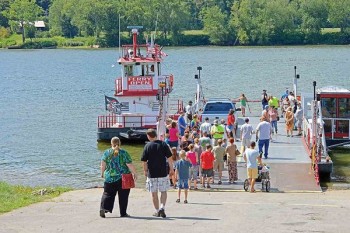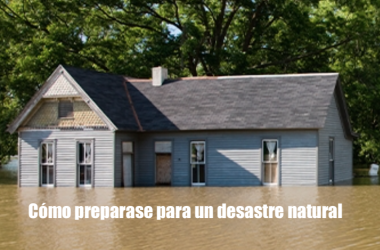
Each year, hundreds of motorists and tourists use the Sistersville Ferry, the only ferry remaining on the Ohio River between West Virginia and Ohio.
SISTERSVILLE, W.Va. — Capt. Herman “Bo” Hause keeps his eyes on the Ohio River as he steers the city of Sistersville II ferry toward the landing.
Because no bridge crosses the Ohio from Tyler County, motorists have to drive at least 15 minutes north to New Martinsville or 20 miles south to cross the river at St. Marys. The ferry is the only transportation across the river.
Tyler County’s leading attraction next year marks its bicentennial, 200 years a ferry has linked Ohio and West Virginia.
“This is the last ferry on the Ohio River in West Virginia,” Hause said.
Hause said alongside his crew mate, Tim Hamilton, the ferry makes on average between 75 and 100 trips a day across the river, more on the weekends such as the upcoming second annual Ohio River Ferryboat Festival. Both sides of the river will feature activities on July 30 that will draw tourists and ferryboats from near and far.
“I look forward to the festival,” Hause said. “More people will be using that ferry that day and I like meeting people.
The ferry operates from 6 a.m.-6 p.m. Thursday and Friday, and from 9 a.m.-6 p.m. Saturday and Sunday. Anyone walking on pays $1 while motorcycles are $4 and single-axle vehicles are $5. Additional axles are $2 and tractor trailers are $18.
During a recent sunny morning, the wind was slight, but noticeable. The river’s current appeared manageable, not choppy as it had been with the recent week’s storms. Tiny waves crashed in the distance of the open river.
“The wind is always a factor,” Hause said as he steered the ferry to the landing in Fly, Ohio.
Soon after the ferry landed, Hause let the craft float free temporarily so as to prove a point about the wind’s power. A light breath of air started to push the multi-ton craft away from the river bank.
“Even a slight breeze can affect us,” he said.
Some mornings, fog hangs heavy above the river and conceals the landings. Hause said he’s not worried when it is foggy because the ferry has radar to see what is ahead. The green images on the screen reveal clear sailing ahead.
“Fog does not hinder my crossing,” he said.
Rain is not a factor if the wind is in check.
“We can work in downpour as long as the long as wind is not an issue,” Hause said.
Fish splash around in the mornings as the ferry makes its crossings.
“This morning, I saw a gar,” Hause said.
Hause has steered many sizes and makes of water craft during his more than 29 years of service in the U.S. Coast Guard. During Hause’s time at sea, he was responsible for steering ships, navigation among other duties. He said the river even under the worst conditions is tame compared to the ocean where the waves can be taller than two-story houses.
“When the river gets rough, it is not as bad as the ocean,” he said.
A few years back, Hause had to pilot a small Coast Guard boat to a distressed fishing trawler in the stormy waters off Georges Bank, Nova Scotia. The trawler was taking on water because its fishing nets were not able to be hauled aboard, so the nets weighed heavy on the ship’s stern. The Coast Guard’s task was not only save the fishermen, but to pump away the water slowly filling the ship before it sank.
“The waves were at least 25 feet high,” Hause said. “That was probably the only time in the Coast Guard that I was scared.”
Hause recalled what happened to him when the rescue mission ended. As he stepped onto the deck of the Coast Guard’s ship, “I collapsed because of leg fatigue,” he said.
Hause, 53, grew up on the New Jersey coast and spent nearly 30 years with the Coast Guard. He joined the Coast Guard when he was 19 years old.
His wife, Sue, is originally from St. Marys, which is how a New Jersey boy who has sailed all over the world knows about Tyler County.
Hause’s rank was chief boatswain before he retired after nearly 30 years from the Coast Guard. When Hause retired in 2011, he wanted to stay close to the water. Being a land-locked state, West Virginia is not necessarily the best place for mariners.
“I wanted to continue to work on the water,” he said. “I never thought about moving to West Virginia and working on the water.”
But an opportunity as a ferry pilot presented itself in Sistersville.
“I guess I was at the right place, right time,” he said.
Hause said though he had entertained thoughts of moving to Florida, the life and people of Tyler County and West Virginia had an effect on him. Hause said he takes his job very seriously as pilot of the only ferry remaining on the Ohio River in West Virginia.
Realistically, he said, if the family moved to Florida, there aren’t a lot of skilled pilots floating around in the area who would want to take up the challenge of steering a ferry. That thought weighs heavy on Hause’s head.
“If I moved, they might not be able to find someone so the ferry would have to shut down,” he said. “I didn’t want to see that happen, so we decided to stay in West Virginia.”
The ferry weighs 17 gross tons while the barge that it pushes weighs 63 tons. For the most part, the river is between 25-30 feet except by the river banks. By the landings, the river’s depth is only about four feet deep, Hause said.
“The West Virginia side is deeper,” he said.
Barges can leave powerful wake as they travel on the river, but that doesn’t necessarily affect the ferry.
“The wake it’s not an issue for ferry travel,” Hause said. “I think they (barge pilots) are aware of the ferry, so maybe they slow down on purpose. Even if there was a big wake, I’d slow down so as not to endanger the boat.”
But a powerful wake is not the only thing this seaman knows to avoid.
“After a heavy rain, there is a lot of debris in the river,” Hause said. “I’ve seen whole trees 30- to 40-feet long floating by.”
Hause said anyone who watches the river knows that no two days are ever the same much like the sea.
“No matter what the weather, no trip across the river is ever the same. Whether it be the current of the river or the traffic on board the ferry’s barge, nothing is ever the same when you cross the river.
“That makes it a challenge. And I enjoy a challenge,” Hause said.
To read more from the Parkersburg News and Sentinel, subscribe here.





